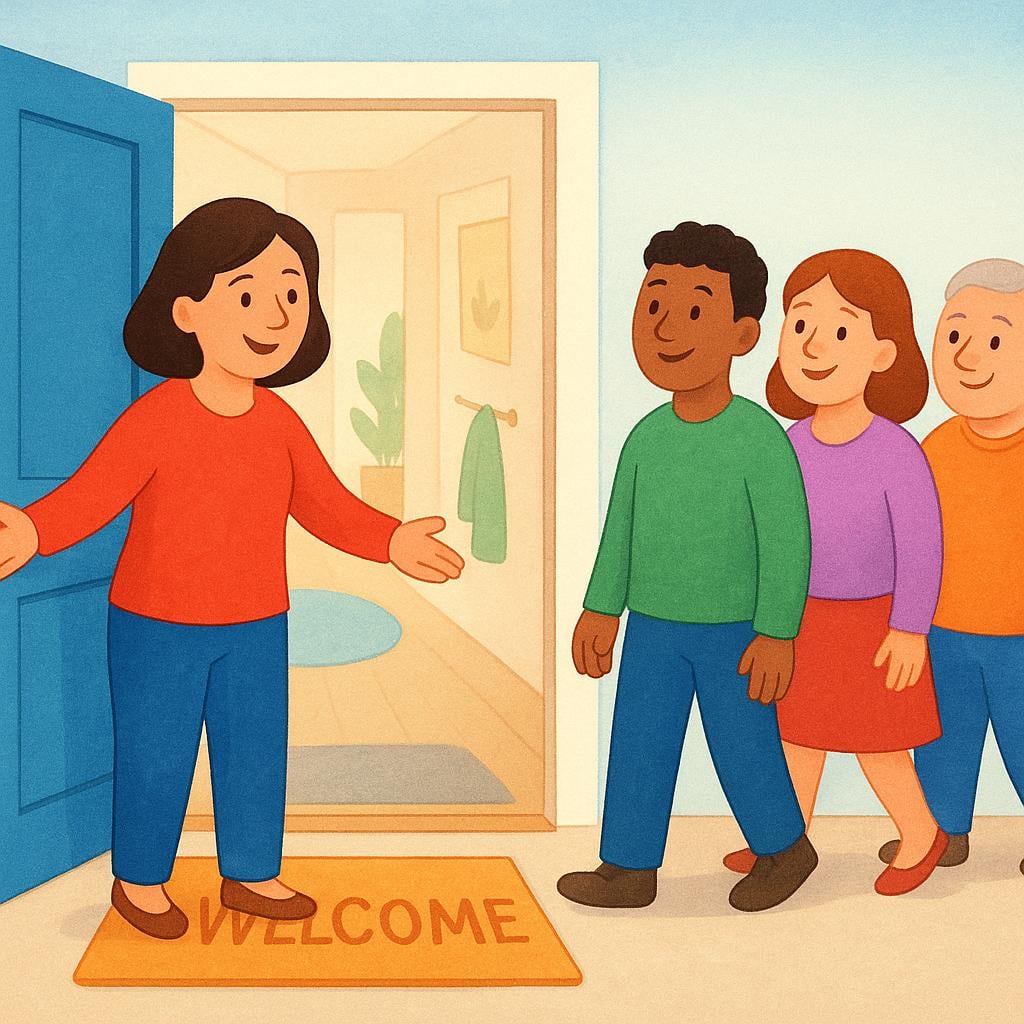sean
/seh-ahn/
be

This illustrates the subjunctive use of 'sean,' expressing a wish or doubt about a group's state, as in 'I hope they are happy' (Espero que sean felices).
sean(Verb)
be
?Used after expressions of wish, doubt, or emotion for 'they' or 'you all' (e.g., 'I hope they are...')
are
?As in 'It's important that they are on time.'
📝 In Action
Espero que sean felices en su nueva casa.
A2I hope they are happy in their new house.
No creo que los resultados sean tan malos.
B1I don't think the results are that bad.
Para mí, es importante que ustedes sean honestos.
B1For me, it's important that you all are honest.
Busco amigos que sean leales y divertidos.
B2I'm looking for friends who are loyal and fun.
💡 Grammar Points
The 'Maybe' Verb Form (Subjunctive)
In Spanish, when you talk about things that aren't definite facts—like wishes, doubts, emotions, or possibilities—you often need a special verb form. 'Sean' is this special form for 'they' and 'you all'.
Trigger Words
Look for phrases like 'espero que' (I hope that), 'no creo que' (I don't think that), and 'es importante que' (it's important that). These are strong clues that you'll need to use 'sean' instead of 'son'.
❌ Common Pitfalls
Using 'Son' Instead of 'Sean'
Mistake: "Espero que son felices."
Correction: Espero que sean felices. After a 'trigger' phrase like 'espero que', the verb changes to show it's a wish, not a fact.
⭐ Usage Tips
Describing What You're Looking For
When you're describing a person or thing that might not exist, use 'sean'. For example, 'Busco unos zapatos que sean cómodos' (I'm looking for some shoes that are comfortable).

This illustrates 'sean' as a formal command, meaning 'be' or 'welcome' to a group, as in 'Please, be punctual' (Por favor, sean puntuales) or 'Be welcomed.'
📝 In Action
Por favor, sean puntuales para la reunión.
B1Please, be punctual for the meeting.
Sean bienvenidos a nuestra ciudad.
A2Welcome to our city. (Literally: Be welcomed...)
No sean pesimistas, todo saldrá bien.
B1Don't be pessimistic, everything will turn out fine.
💡 Grammar Points
Giving a Command to a Group
'Sean' is how you give a command to a group of people you are addressing as 'ustedes'. This is used everywhere for formal situations, and in Latin America for all group commands.
❌ Common Pitfalls
Using 'Ser' for a Command
Mistake: "Ustedes, ser amables."
Correction: Ustedes, sean amables. To give a command, you have to use the special imperative form, not the basic 'ser' form.
⭐ Usage Tips
Positive and Negative Commands
Conveniently, 'sean' is used for both positive and negative commands. For example, 'Sean puntuales' (Be punctual) and 'No sean impacientes' (Don't be impatient).
🔄 Conjugations
indicative
present
preterite
imperfect
subjunctive
present
imperfect
✏️ Quick Practice
💡 Quick Quiz: sean
Question 1 of 2
Which sentence correctly uses 'sean'?
📚 More Resources
Frequently Asked Questions
What's the difference between 'sean' and 'estén'?
Great question! Both can mean 'be', but they come from different verbs. 'Sean' comes from 'ser' and is used for permanent characteristics or identity (like 'I hope they are good people'). 'Estén' comes from 'estar' and is for temporary states or locations (like 'I hope they are at home').
Is 'sean' only for 'they'?
No, it's a bit tricky! 'Sean' is used for 'ellos/ellas' (they) AND for 'ustedes' (you all, formal or general). So 'Espero que sean felices' could mean 'I hope they are happy' or 'I hope you all are happy'. You can tell from the context of the conversation.